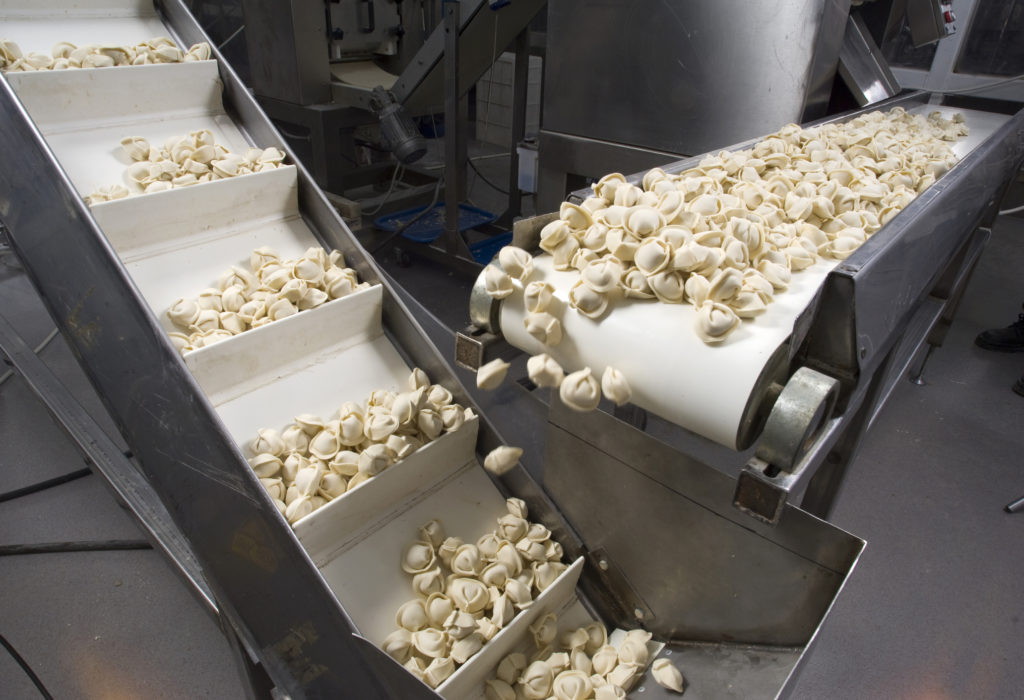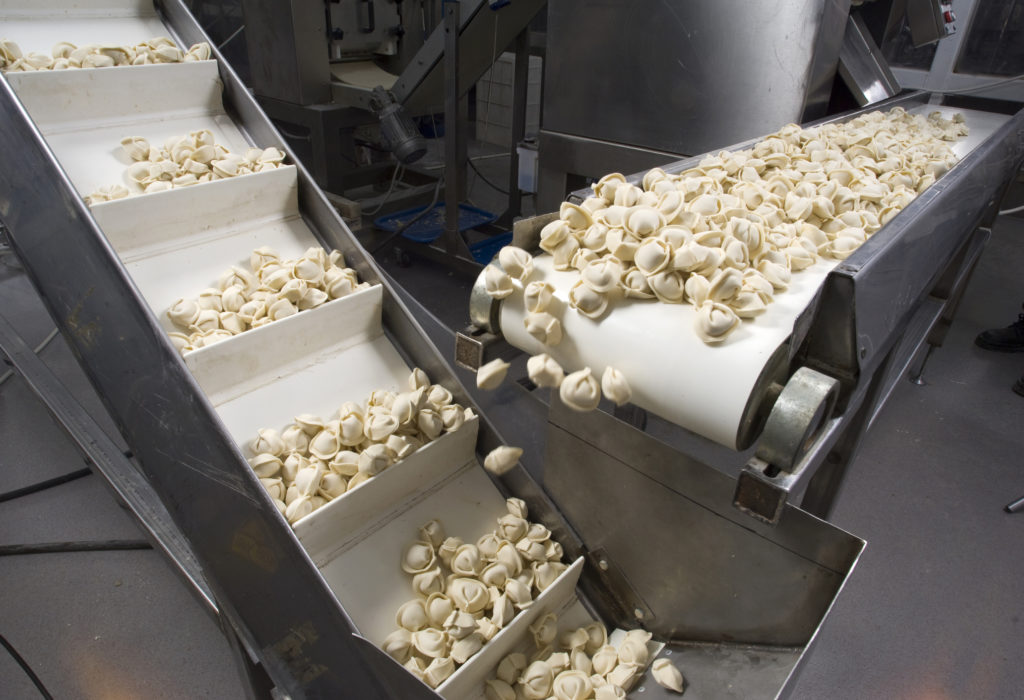
Armenian composer and philosopher G I Gurdjieff once admonished his audience to ‘Live a life of friction. Let yourself be disturbed as much as possible, but observe.’ In terms of personal development, this can indeed be a useful maxim, but for contamination control and manufacturing little may be further from the truth. Friction is actually the nemesis of the manufacturing process – to be avoided as far as possible – which is why we’re looking today at food-grade lubricants specifically. And there’s more to be said on the subject than you might imagine. Initially broadly familiar, on closer examination these substances reveal themselves to be in fact rather specialized agents deployed in the service of safely producing our snacks, staples, and everything in between. Read on to learn more about greases, oils, and why considered selection is critical to minimizing contamination in the food processing industry.
Some time before her promotion, one of our team had a late model station wagon that positively drank oil. Breakfast, lunch, and dinner, this car just feasted on an expensive synthetic brand with a vehicular appetite that no diet coach could ever rein in. Or mechanic, for that matter. The predilection of this automobile for consuming a pricy formulation cost its owner handsomely, eventually prompting an exasperated shift to the cheaper, low-performance oil until she could finally upgrade her ride. The moral of the story? Very often, the move from highly refined, high-performance synthetics to a more natural alternative is the most prudent way to go.
And in the food industry we’ve also witnessed a shift from synthetic ingredients designed by engineers in a lab to natural alternatives.
Think of the number of times we see foods and ingredients labeled organic, biodynamic, free-range, grass-fed, pasture-raised et cetera. But there is one remaining area within the food manufacturing industry where synthetic products arguably continue to reign supreme – that of food-grade lubricants.
When we talk about these oleaginous substances, we’re not thinking of the greasy fat congealing in the frying pan after you heat that burger patty. Nor yet the oily residue from a handful of potato chips, snagged from the lunchtime buffet. So if that’s not the case, what exactly are we discussing when talking about food-grade lubricants and why are they important? We’re glad you asked so let’s try to shed some light on the topic…
Fundamentally, food-grade lubricants are products used within manufacturing plants in order to prevent routine damage to machinery including wear, oxidation, corrosion, and friction-related deterioration.
Their role is also to dissipate heat, to act as sealers, to resist the effects of water and steam, and to defend against contamination by bacterial, fungal, or yeast sources – an always critical consideration in food processing environments. In terms of their chemical make up, they must be compatible with materials commonly found in industrial equipment such as rubber and silicone and should offer a neutral interaction with plastics and elastomers. In the absence of toxins such as lead, zinc, lithium, they are considered non-toxic in terms of incidental consumption and, in terms of the bigger picture, they critically must not interfere with the taste, texture, odor, or quality of the final food product. At a conference in Esslingen, Germany, Ashlee Breitner of NSF International, a not-for-profit public health and safety organization based in Ann Arbor, MI, went on to explain their use: ‘Food grade lubricants are essential to safe facility operations. The custom configuration and scale of equipment in food plants combined with challenging environmental conditions (steam, condensate, heat and organic matter) means lubricants and greases with custom performance characteristics often must be used.’(1) And these critical, yet often unsung heroes of the manufacturing process come in three distinct designations and two basic formats. So let’s dive a little deeper …
The original categorization of the three designations of food-grade lubricants – H1, H2, and H3 – was created by the U.S. Department of Agriculture (USDA) and is specified according to the ingredients present in the final product.
For instance, an oil that is categorized as an H1 lubricant contains components known to be safe in food production where incidental contact with food products can be expected to occur. H2, on the other hand, is reserved for situations where direct contact with food cannot occur. And finally, edible oils that are used for rust prevention in machine parts such as hooks are designated as H3. When it comes to a choice between H1 and H2 selection, manufacturers often err on the side of caution and select the more stringently controlled H1 but outside of this decision, there is also the question of compound formulation – mineral-based or synthetic – and this comes down to a review of dual factors: application and cost.
While mineral-based products are cheaper than their synthetic counterparts, they are only recommended for comparatively low temperature applications. For example, any use above 140°F will cause the hydrocarbons in mineral oil to break down. And for every 18°F over the 140°F benchmark, the service life of the lubricant is reduced by 50%. Clearly this has cost implications, as the more frequent replacement of the grease will impact a manufacturer’s bottom line. Synthetic lubricants, on the other hand, are created with a view to offering an improved efficiency through extended service life over their mineral-based counterparts. Given that they are designed to withstand both higher and lower operating temperatures from 140°F to over 200°F, the base temperature of around 175°F makes them a more generally useful option. With that said, both variations are both essentially petroleum-based so what accounts for the difference?
According to an article published last year in Food Processing, a source of information for the food and beverage manufacturing industries, synthetic products may include ‘polyol ester food grade chain oils and perfluoropolyether (PFPE) greases for extreme high temp applications.’(2) But in terms of their production, the main difference between synthetic and mineral-based lubricants is the raw material from which they are formulated. Mineral oil is a generic term that basically indicates the use of highly refined petroleum; synthetics, on the other hand, have chemicals other than those found in crude oil as their basis, the most frequently being olefins and esters.
But there is also a third option: bio-based oils.
Where indicated as a potential alternative, bio-based products tend to be less harmful in terms of their environmental impact, may be both biodegradable and created from renewable resources, and their use may drive down the domestic demand for, and reliance upon, imported petroleum. Moreover, in comparison with both synthetics and mineral-based options, bio-based lubricants can offer enhanced lubricity (a metric of the reduction of friction gained by the use of a lubricating medium), better viscosity, and more stable flash points. For instance, according to an analysis published in Machinery Lubrication, an online magazine dedicated to bringing news about best practice lubrication and oil analysis, the flash point for a vegetable oil ‘might be 326 degrees C (610 degrees F) […] compared to a flash point of 200 degrees C (392 degrees F) for most mineral oils, 221 degrees C for polyalphaolefin (PAO) and 177 degrees C for polyglycol.’(3)
And the benefits extend beyond the flash points. Vegetable oils have a very high viscosity index (VI) – 223 VI in comparison with 90 VI to 100 VI of the majority of mineral oils – which means that their viscosity changes less in the presence of higher temperatures and is therefore more predicable. And of course, in today’s age of appropriate environmental sensitivity, if a processing plant is situated in a fragile geographical area – close to a waterway or the coast, for instance, a spill or leak of a biodegradable grease would almost certainly be preferable that one of a crude oil or refined petroleum product.
With that said, bio-based greases are considered inferior in comparison with their counterparts when it comes to low temperature applications although, with some formula tweaking, this can be overcome. By adding biodegradable synthetic esters, cold temperature properties can be enhanced to some degree, although to remain as a ‘bio-based’ end product the proportion of synthetic esters should be minimized as far as possible. In addition, a further consideration in using non-synthetic alternative lubrication may be that the materials do not fall within the parameters of use as specified by equipment manufacturers. And as any homeowner knows, when a product is not specifically recommended for use with a piece of equipment, it is not only performance but also warranties that can be impacted. And finally in terms of potentially disadvantageous considerations is the fact that some regulatory limitations may be placed on the use of bio-based lubricant compounds in public areas, depending on their specific application.
Speaking of limitations, what are the regulations governing the use of these three types of food-grade lubricants? Interestingly that depends on where you are in the world. In Europe, for instance, our earlier analyst, Ashlee Breitner notes that ‘There are no […] regulations for the formulation of incidental contact lubricants used in food processing facilities.’(4) So if that expensive, imported, genuinely-Belgian Belgian Waffle you enjoy with your morning coffee comes into contact with conveyor belt grease during manufacture, well que sera sera… However, north of our borders the Canadian Food Inspection Agency (CFIA) actively enforces all standards of oversight established by Health Canada, going as far as to implement Hazard Analysis and Critical Control Points plans (HACCP) in all federally recognized food processing plants. Fortunately for this discussion, Canadian regulators use the formulary criteria established by the US Food and Drug Administration’s (FDA’s) Code of Federal Regulations – US Title 21 CFR Section 178.3570 to describe the acceptable structure of food-grade lubricant materials with four potential criteria. Firstly: acceptable components such as surfactants, antioxidants, and oils are outlined, along with the limits set upon their use. Secondly: the lubricant as a whole must be Generally Accepted As Safe (GRAS) according to definitions established in 21 CFR Parts 182 and 184. Thirdly: if subject to a prior approval, the lubricant must be used as sanctioned and without deviation from the conditions of that original approval. And lastly, any lubricant must have been approved through the specified FDA Food Contact Notification approval process, especially if using what Richard Beercheck writing in his article ‘International Regulations for Food Grade Lubricants’ describes as ‘novel chemistries.’(5)
So for consumers here in North America, the safe use of food-grade lubricants is governed by the same level of regulation as any other food or drug product. Whether this information is reassuring or alarming largely depends upon your perspective and experience. And, given that we frequently cover failures in the food manufacturing process which lead to dangerous, sometimes fatal outcomes, perhaps your level of dis/comfort depends upon the number and nature of our Food Contact Surfaces articles you have already…erm, consumed …
Have you ever really considered the role played by lubricants in the food manufacturing process? Does it concern you that oils and grease may become an unwelcome contaminant in your snacks? We’d love to know your thoughts!
References:
- https://www.nsf.org/newsroom_pdf/nfc_int_regulations_food_grade_lubricants.pdf
- https://www.foodprocessing.com/articles/2018/food-grade-lubricants/
- https://www.machinerylubrication.com/Read/28760/advantages-disadvantages-of-biodegradable-lubricants-
- https://www.nsf.org/newsroom_pdf/nfc_int_regulations_food_grade_lubricants.pdf
- ibid

